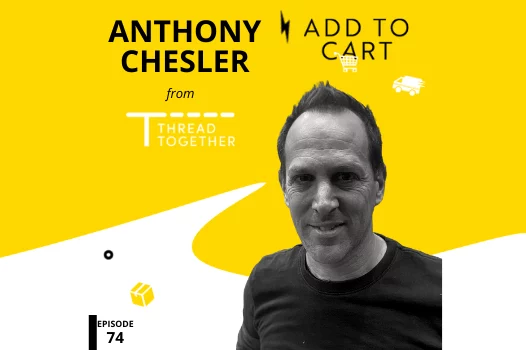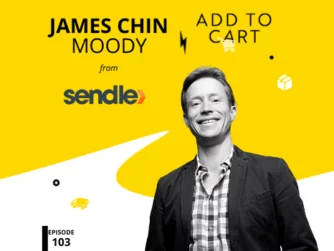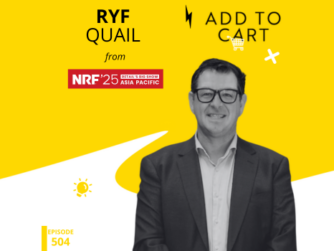In this episode of Add To Cart, we are joined by Anthony Chesler, CEO of Thread Together, an organisation that aims to drive social and environmental change by connecting excess retail clothing with people in need. Whether these people are impacted by floods, bushfires, domestic violence, homelessness, asylum seekers, leaving jail or even, COVID, Anthony and his team hope to restore some dignity through the power of clothing. In this chat, Anthony talks about the amazing retail partners they have on board including Surfstitch, The Iconic, PE Nation, Bec & Bridge, UnderArmour and Afterpay, how they manage fulfillment and why clothing is the forgotten basic human right.
“There’s definitely a movement around brands recognising the importance of contribution back to community and they’re looking for ways in which to do that“
Anthony Chesler
Questions answered in this episode include…
- How much waste is there in the fashion industry?
- Who can benefit from a Thread Together wardrobe and what is the impact on that person’s life?
- What key things do you need from brands who want to get involved?
Thread Together – a response to fashion excess
“Thread Together is Australia’s highest ethical response to fashion excess. We partner with hundreds and hundreds of fashion brands, retailers all around the country. And we’re a solution to a problem that they have around product at end-of-line or end-of-life. So end of season, what does a store do with clothing that they haven’t managed to sell or sell through various channels? We’re a solution to that problem. And we’re going to collect that product in whatever quantity, in whatever size range, and redistribute it to vulnerable people in the community.
We’ve created a frictionless marketplace. If you think about us is like a B2B. The sources of supply of our product come from these fashion brands all around the country. They simply get in touch with us and provide us with five key data points that allow us to arrange the collection.
So we save a retailer the cost of holding that product in their warehouse or with the third-party logistics provider. We save them the cost of freight to get it to us and any disposal costs that they may incur. Now, those are sort of what I would call the hard costs that we save them. And we arrange to go and collect that. So we simply need to know, where are we collecting the product from, and how many cartons or pallets that we’re collecting? We then arrange to send them the consignment note and the manifest. They label the cartons or pallets, and the magic makes its way back to our center. We run a centralized distribution model. So we distribute nationally all around the country.
We’re working with brands like Under Armor, Bend On. We have some beautiful product that comes from the Iconic, both private label and some of the third-party label. We’re working with SurfStitch. We’re working with the Retail Apparel Group and all of their brands. So Connor, Weide, Johnny Big, Tarocash. Some of the women’s brands include P.E Nation, the girls there, they’re all amazing. They come in and volunteer here and they support us with clothing donations at different times of the year. Some of the more high-end fashion comes from Bec & Bridge and Camilla & Marc.”
The forgotten basic human right
“I think it’s important to recognize that people that are vulnerable need to be met and you need to sort of walk alongside them, and you need to create opportunities for them to feel empowered. We talk about clothing being the forgotten basic human right. People that are vulnerable will tend to look for food, security and shelter, but tend to wear the clothing that they have on their backs until it’s completely deteriorated. And we see people coming to our service with nothing on their back, no shoes on. And it’s really sad to see that. But we’re really pleased to be able to meet that need where the need exists.
There’s so many stories. It’s almost like we saw during the bush fires. We heard some really horrific stories of people fighting back, staying back…a 74 year old gentlemen who came into one of our clothing hubs to be reclothed had a super expensive wardrobe, which he lost. And we heard the challenges that he had experienced to try and to protect his home.
Not only do you hear it, but you see it. We met an individual on the South Coast last week who had fifth degree burns all over her body. She shared photographs with us. So you see people that have been traumatized by circumstance.
We’ve had the police contact us and ask us to open our clothing hubs in the middle of the night because we’ve had women arrive, and they’ve arrived battered and bruised and no clothing. And it’s trauma. You’re seeing trauma. When you’re doing outreach services, when you’re working with homeless people, or you’re working with asylum seekers or refugees. We send clothes into detention centres.
You hear stories every single day about the lack of dignity that people have, not having access to clothing.”
Retailers! Thread Together need YOU!
“We need four things to help us to deliver our services. The first T is time. And retailers, what we’re seeing are increasingly wanting to get involved in helping us to deliver our service. So they’ll provide stylists and makeup artists and others to join us in our clothing hubs to work with vulnerable people. They’ll give their team’s time to come and volunteer with us. So we’ve just recently had a team from the Athlete’s Foot here. Tomorrow, the team from Afterpay will actually be here. We’ve had fashion brands from the Iconic. The Iconic team are always here. And so giving up their time to come and help us, that’s the first T. And that could be to drive our vehicles out into outreach, working in our retail stores or in our fulfilment centre.
The second is talent. We’re a very small team with very high ambitions. We’ve got a strategic plan and four goals that we’re trying to achieve. And we need help to achieve those goals. One of our partners has actually done some data analysis for us. They’ve given us the talent to help us to identify who are the next 100 agencies within the three, five and seven kilometre radius of certain post codes so that we can go and target on onboarding. So it’s like almost a customer acquisition strategy through data-driven analysis.
The third T, which I’m really excited about is the ties or introductions or connections. And again, being small, we rely on the network effect of our partners to communicate to others. So we’re looking to onboard customers or charities and social service agencies. So we rely on those that are onboard to talk to others.
And on the retailer side, which is really, really important, we always have gaps in our product categories. We may be short on socks at a particular time. We may be short on kids’ wear, which is what we are at the moment, or for example, men’s jeans. There’s been an influx of need for men’s jeans at the moment. And so partners like The Iconic and others will introduce us to new brands, like we’ve just onboarded Nudie Jeans, and they’ve made an amazing donation to support us on the floods. And we’ve onboarded Levi’s, who’ve made a donation. Those came through introductions or connections or ties that were made by different fashion partners.
And the last T, which is probably the one that keeps me up the most at night, is the treasure. So, being a registered charity, we fundraise to cover our costs. And so we’re very reliant on philanthropy to help us to do so. And what we’re seeing from retailers is they’re wanting to do more than just donate clothing to us.
So they are coming to a very strong realisation of the importance to connect to community or demonstrate to their customer base that they’ve not just got a section on their website that says that they have a sustainable line of product, but they’re actually ethically manufactured, but they’re actually contributing back into community. And if you can make it easy for fashion brands to contribute in a way, we find that they are happy to do so. So we’re looking for brands to help us to raise $5,000. So that helps us to clothe almost twenty five thousand people at $5 per person.”
Links from the episode
- Thread Together
- Under Armour
- Bendon
- The Iconic
- Surfstitch
- Conor
- YD
- Johnny Big
- Tarocash
- Camilla & Marc
- Bec & Bridge
- PE Nation
- Saturday the Label
- Nudie Jeans
- Levis
- Athlete’s Foot
- Bamboozle
- Calvin Klein
- Tommy Hilfiger
- The Goodman Foundation
- Afterpay
- Commonwealth Bank
- Klaviyo
- Hubspot
- Carla Zampatti
- i=Change
- Decjuba
- Shopify Plus and Aje (sponsored)
- Signet and Free to Feed (sponsored)




